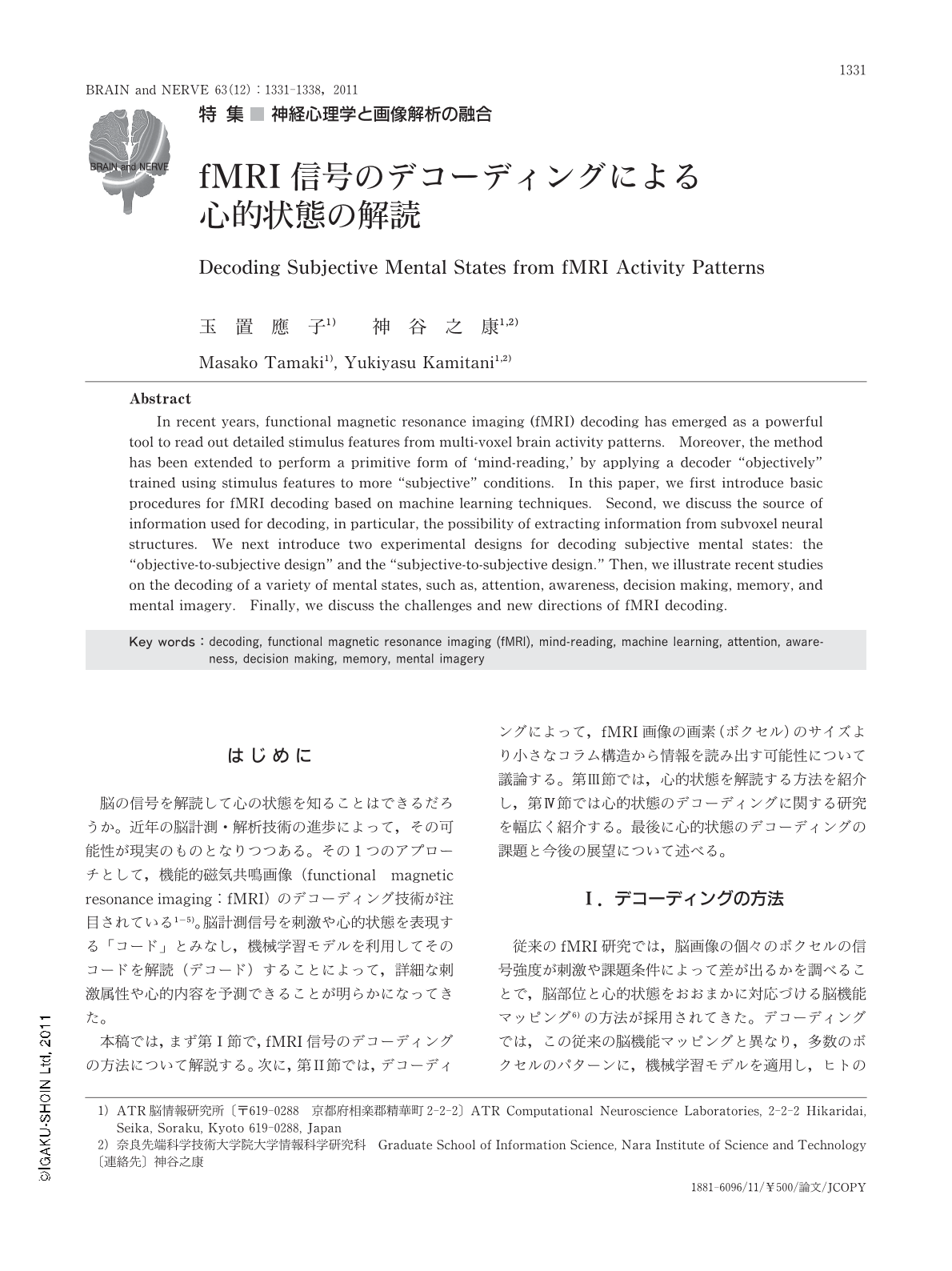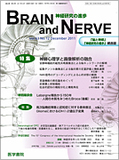Japanese
English
- 有料閲覧
- Abstract 文献概要
- 1ページ目 Look Inside
- 参考文献 Reference
はじめに
脳の信号を解読して心の状態を知ることはできるだろうか。近年の脳計測・解析技術の進歩によって,その可能性が現実のものとなりつつある。その1つのアプローチとして,機能的磁気共鳴画像(functional magnetic resonance imaging:fMRI)のデコーディング技術が注目されている1-5)。脳計測信号を刺激や心的状態を表現する「コード」とみなし,機械学習モデルを利用してそのコードを解読(デコード)することによって,詳細な刺激属性や心的内容を予測できることが明らかになってきた。
本稿では,まず第Ⅰ節で,fMRI信号のデコーディングの方法について解説する。次に,第Ⅱ節では,デコーディングによって,fMRI画像の画素(ボクセル)のサイズより小さなコラム構造から情報を読み出す可能性について議論する。第Ⅲ節では,心的状態を解読する方法を紹介し,第Ⅳ節では心的状態のデコーディングに関する研究を幅広く紹介する。最後に心的状態のデコーディングの課題と今後の展望について述べる。
Abstract
In recent years,functional magnetic resonance imaging (fMRI) decoding has emerged as a powerful tool to read out detailed stimulus features from multi-voxel brain activity patterns. Moreover,the method has been extended to perform a primitive form of 'mind-reading,' by applying a decoder "objectively" trained using stimulus features to more "subjective" conditions. In this paper,we first introduce basic procedures for fMRI decoding based on machine learning techniques. Second,we discuss the source of information used for decoding,in particular,the possibility of extracting information from subvoxel neural structures. We next introduce two experimental designs for decoding subjective mental states: the "objective-to-subjective design" and the "subjective-to-subjective design." Then,we illustrate recent studies on the decoding of a variety of mental states,such as,attention,awareness,decision making,memory,and mental imagery. Finally,we discuss the challenges and new directions of fMRI decoding.

Copyright © 2011, Igaku-Shoin Ltd. All rights reserved.


